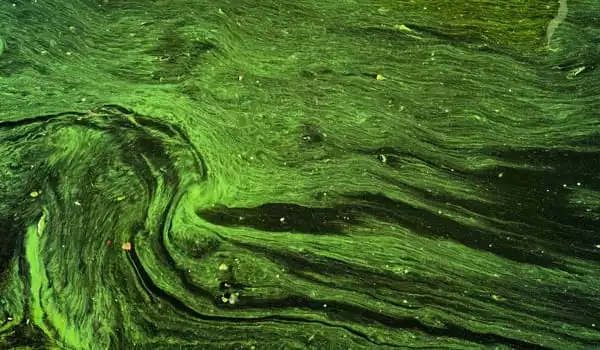Climate change, according to scientists, will have a wide range of effects on freshwater and marine environments. These effects, combined with nutrient pollution, may cause harmful algal blooms to occur more frequently, in more water bodies, and with greater intensity. Harmful algae typically bloom during the hot summer months or when water temperatures are higher than normal.
According to a new study, changes in light conditions have a significant impact on the growth and impact of harmful algae blooms. The bottom line is that a warming climate favors the growth of toxic algae while potentially disrupting other organisms in the food web, whether they graze on the algae or are consumed by it.
To survive, algae require carbon dioxide. Increased carbon dioxide levels in the air and water can promote the rapid growth of algae, particularly toxic blue-green algae that can float to the surface of the water. Bad things can happen when algae go wild, especially when those algae produce toxic substances. The repercussions can be powerful and long-lasting.
To survive, algae require carbon dioxide. This algae is “mixotrophic,” which means it is extremely resourceful, drawing energy from the sun at times and eating other algae and bacteria at others.
Kathryn Coyne
Examples include the so-called “dead zone” that occurs on a regular basis in the Chesapeake Bay, where decaying algal blooms suck the oxygen out of the water and endanger all plant and animal life. Toxins released by an algal bloom in Lake Erie in 2014 polluted Toledo’s water supply, forcing the closure of a water treatment plant. These toxic blooms can be fatal to water-loving dogs, cause illness in humans, and devastate a region’s economy. Warming temperatures, according to scientists, are contributing to an increase in the number of these harmful algal blooms.
A new study demonstrates how changes in light conditions affect the growth and impact of these algae. The study, led by University of Delaware Associate Professor Kathryn Coyne of the College of Earth, Ocean, and the Environment, was published in the journal PLOS ONE. The bottom line is that a warming climate favors the growth of toxic algae while potentially disrupting other organisms in the food web, whether they graze on the algae or are consumed by it.

“These are likely to get worse and extend not just temporally as the growing season is longer, but also geographically, where the temperature or light regime was not favorable for growth previously,” Coyne said. Karlodinium veneficum, also known as the “fish killer,” is a species of microscopic algae found in the Chesapeake Bay and Delaware’s inland bays.
This algae is “mixotrophic,” which means it is extremely resourceful, drawing energy from the sun at times and eating other algae and bacteria at others. K. veneficum is a single-cell organism with two flagella that propel it forward to connect with its prey and stun it with toxins.
According to the findings, this alga can alter its growth strategy in response to changing light conditions. These variations in light interacted with carbon dioxide and temperature to influence cell growth and the amount of carbon and nitrogen stored.
Coastal upwelling occurs when winds push surface water offshore and deepwater moves toward the coast, bringing nutrients from the ocean floor to the surface. The timing and intensity of coastal upwelling are expected to change as a result of climate change. Excess nutrients delivered by upwelling may result in more algal blooms along the west coast of the United States.
The population did not grow in low-light conditions. Instead, the alga’s cell was densely packed with carbon and nitrogen. The population increased in high-light conditions, but the cells had lower levels of carbon and nitrogen.
“You change the light and get completely different results than you did before,” Coyne explained. This alga also acclimated to higher temperatures (to 30 degrees Celsius/86 degrees Fahrenheit) during the course of the study, which it had not previously been known to tolerate.
“This suggests that the temperatures used in this study will not limit their growth,” she said. “They eventually become acclimated to higher temperatures if they are exposed to them over a long period of time.”
These kinds of changes will also have an impact on the creatures that consume this alga, as they may become less nutritious as a result of climate change. This weakens the organisms that would normally constrain the algal population, giving K. veneficum a number of advantages over predators and other algae.





